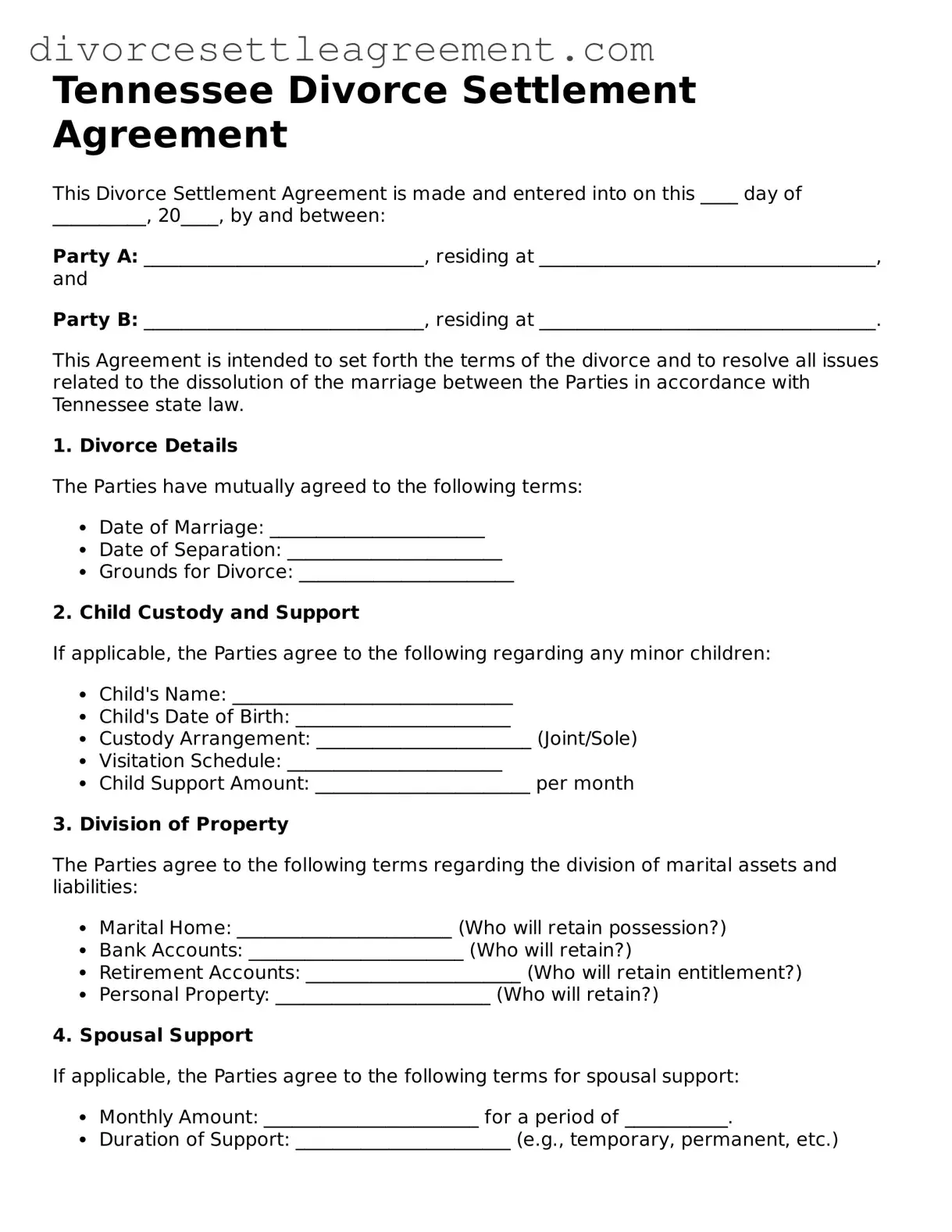What is a Tennessee Divorce Settlement Agreement form?
A Tennessee Divorce Settlement Agreement form is a legal document that outlines the terms and conditions agreed upon by both spouses during a divorce. It covers important aspects such as property division, child custody, visitation rights, and spousal support. This agreement serves as a roadmap for the divorce process and can help avoid future disputes.
Who needs to complete this form?
Both spouses involved in a divorce in Tennessee need to complete this form if they reach an agreement on the terms of their separation. It is essential for couples who want to ensure that their rights and responsibilities are clearly defined and legally recognized by the court.
How do I fill out the form?
To fill out the form, start by entering your personal information, including your name and the name of your spouse. Next, detail the terms of your agreement regarding asset division, debts, and any arrangements related to children. Make sure both parties review the document for accuracy before signing. It's advisable to consult with a legal professional if you have questions about specific clauses.
Is the Divorce Settlement Agreement legally binding?
Yes, once both parties sign the agreement and it is submitted to the court, it becomes legally binding. This means that both spouses are obligated to adhere to the terms outlined in the document. Failure to comply can result in legal consequences.
Can I modify the agreement after it is signed?
Yes, modifications can be made to the agreement after it is signed, but both parties must agree to the changes. Any amendments should be documented in writing and may need to be approved by the court to ensure they are enforceable.
What if we cannot agree on the terms?
If you and your spouse cannot reach an agreement, you may need to consider mediation or seek a court trial. Mediation involves a neutral third party who can help facilitate discussions and find common ground. If mediation fails, the court will make decisions regarding the divorce terms based on the evidence presented.
Where do I submit the completed form?
The completed Divorce Settlement Agreement form should be submitted to the appropriate family court in the county where either spouse resides. It's important to check with the local court for any specific filing requirements or fees associated with the submission.
